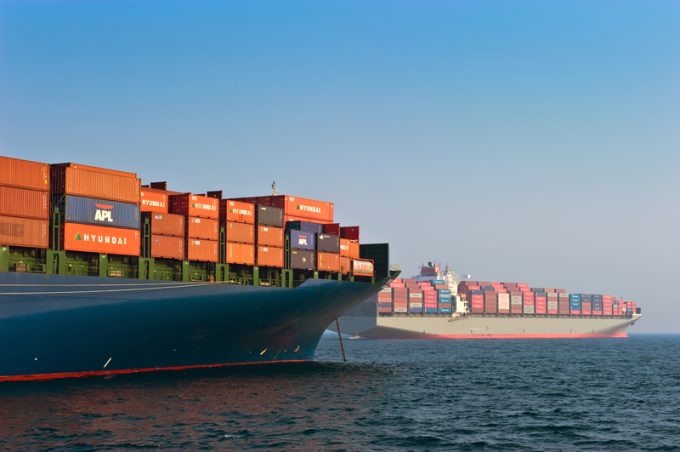Ecommerce and electronics traffic give Cathay Cargo results a lift
Cathay Cargo’s 2024 results were boosted by ecommerce and electronics, giving it a 11% hike ...

Rising demand and improved freight rates in the second half of last year enabled ocean carriers to return a consolidated profit of $1.5bn for the year, according to Drewry’s latest Container Forecaster report.
With all the major carriers that publish their financial results now having reported, the container lines were able to turnaround a deficit of some $2.2bn in the first two quarters into a positive full-year result.
However, it will only take another spike in oil prices or a rate war ...
Trump tariffs see hundreds of cancelled container bookings a day from Asia
'To ship or not to ship', the question for US importers amid tariff uncertainty
'Chaos after chaos' coming from de minimis changes and more tariffs
Forto 'sharpens commercial priorities' as it lays off one-third of staff
List of blanked transpac sailings grows as trade war heats up and demand cools
EC approves DSV takeover of DB Schenker
'Disastrous' DSV-Schenker merger would 'disrupt European haulage market'
Overcapacity looms for ocean trades – with more blanked sailings inevitable
Amazon Air’s metamorphosis: 'a different air cargo unit from two years ago'
Shippers in Asia restart ocean shipment bookings – but not from China
India withdraws access for Bangladesh transhipments, in 'very harmful' decision
'Tariff hell' leaves industries in limbo – 'not a great environment to plan'


Comment on this article
Martyn Benson
April 09, 2019 at 5:03 pmA few additional remarks not mentioned in this article:
With the end of the world predicted by some financial pundits in 2019 and 2020, there is no guarantee of rising volumes, especially in the light of increased protectionism, as practiced by Mr Trump, coupled with a slowing China. (Note blanked FE-Eur sailings recently).
There is no reason why IMO2020 should push fuel prices to double if the refiner producers get their act together and produce more LSFO, with a possibility that HSFO could become the endangered species because less operators will be buying this. Indeed, with oil price spikes caused by unrest in Venezuela, Libya and the Iran embargo, the world geopolitics is likely to have more influence on bunker pricing than production of a new fuel type.
The big question for those rushing to fit scrubbers is whether the price differential really will be $ 200 or maybe closer to $ 50 ……and even the other way around by the end of 2020.
The article did not mention the local (?) effects Brexit will have to disrupt traffic patterns – although Drewry seem to think that container availability will not be an obstacle, notwithstanding that 45′ PWHCs will be the box of choice, which are not exactly growing on trees.
The IMO will not push anyone into consolidation that would not be at that point anyway (and, as P&O and Nedlloyd showed, two weak lines merging does not add up to one stronger line) – the mergers that could happen will be because the operators/ shareholders have lost the appetite to fight a losing battle. If there is an effect on operators it will be on those carriers who are still operating obsolete tonnage – such as conventional reefer companies who could not justify the reinvestment, technology and know-how required to tool up to fully containerised services.
The last round of consolidation between COSCO and CSCL…..was OOCL too small to be worth mentioning?
Why would RHJ say that consolidation has reached its limit? Surely the industry still has plenty of victims to be merged and taken over – surely consolidation is only limited by the imagination of its leaders and financiers? It is always possible that CMA-CGM could take Evergreen or any one of the Top 10 could merge with another Top 10 operator.